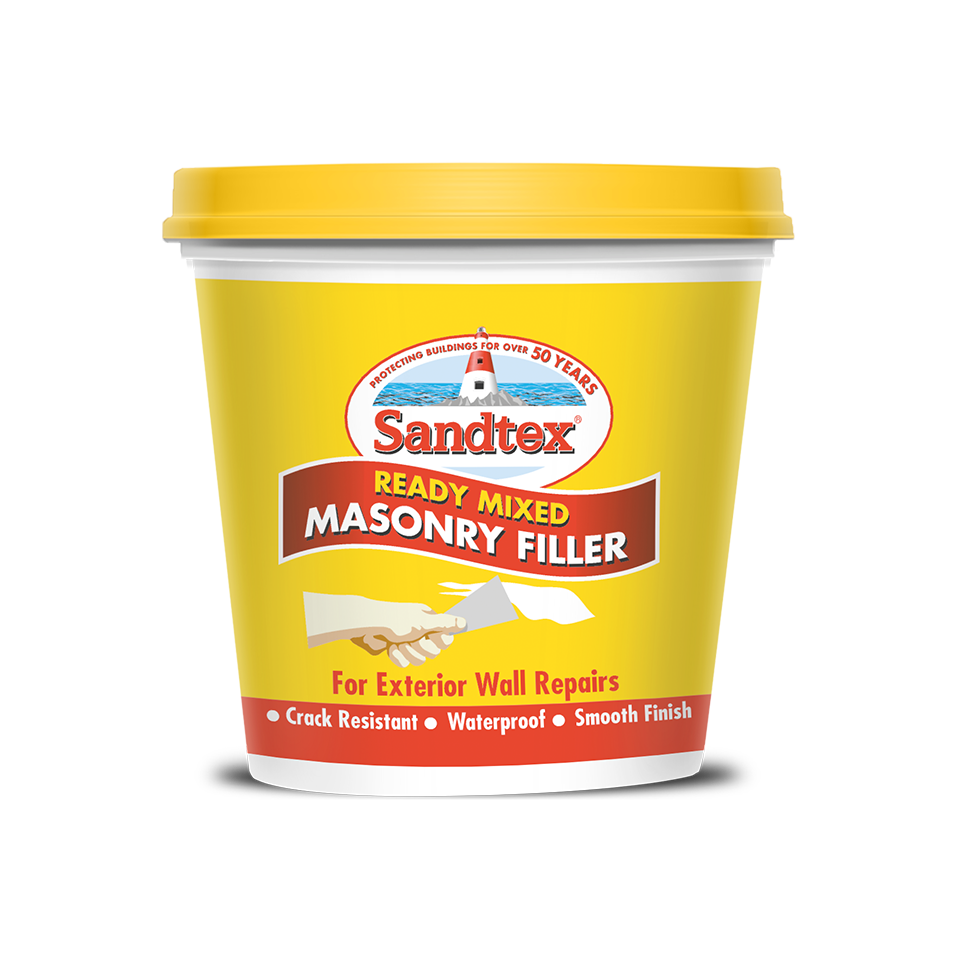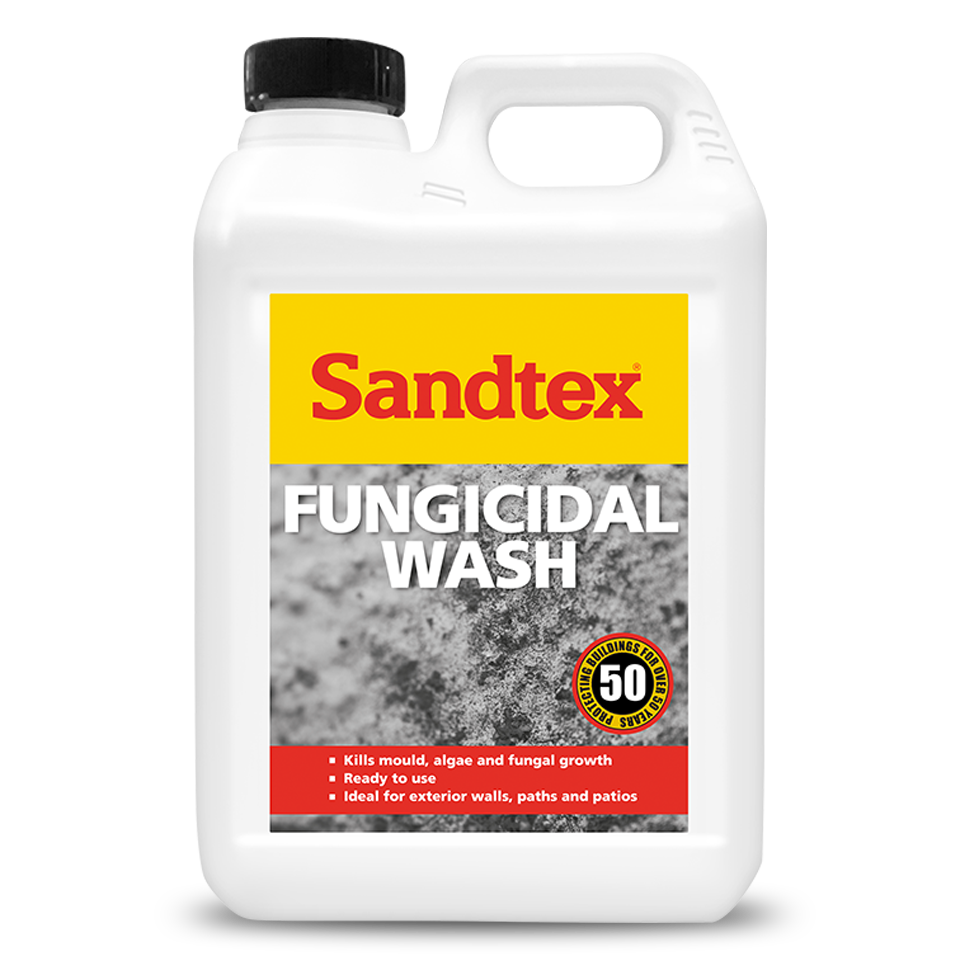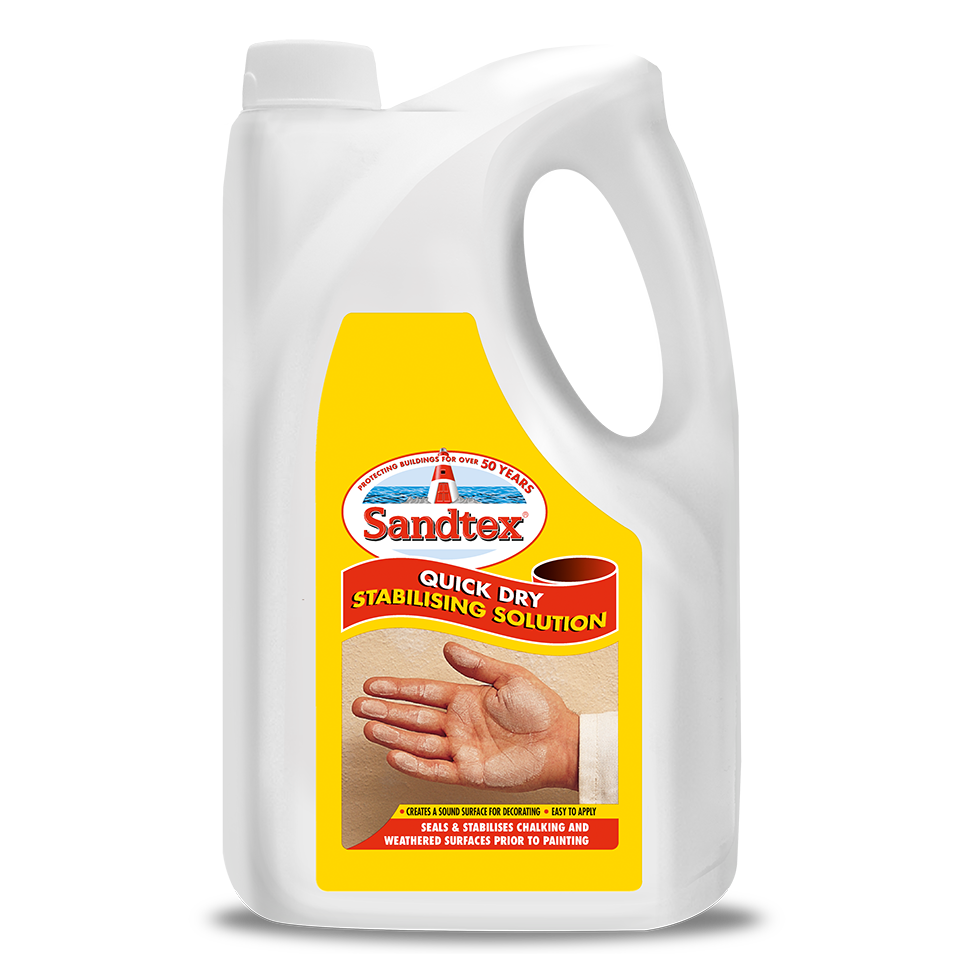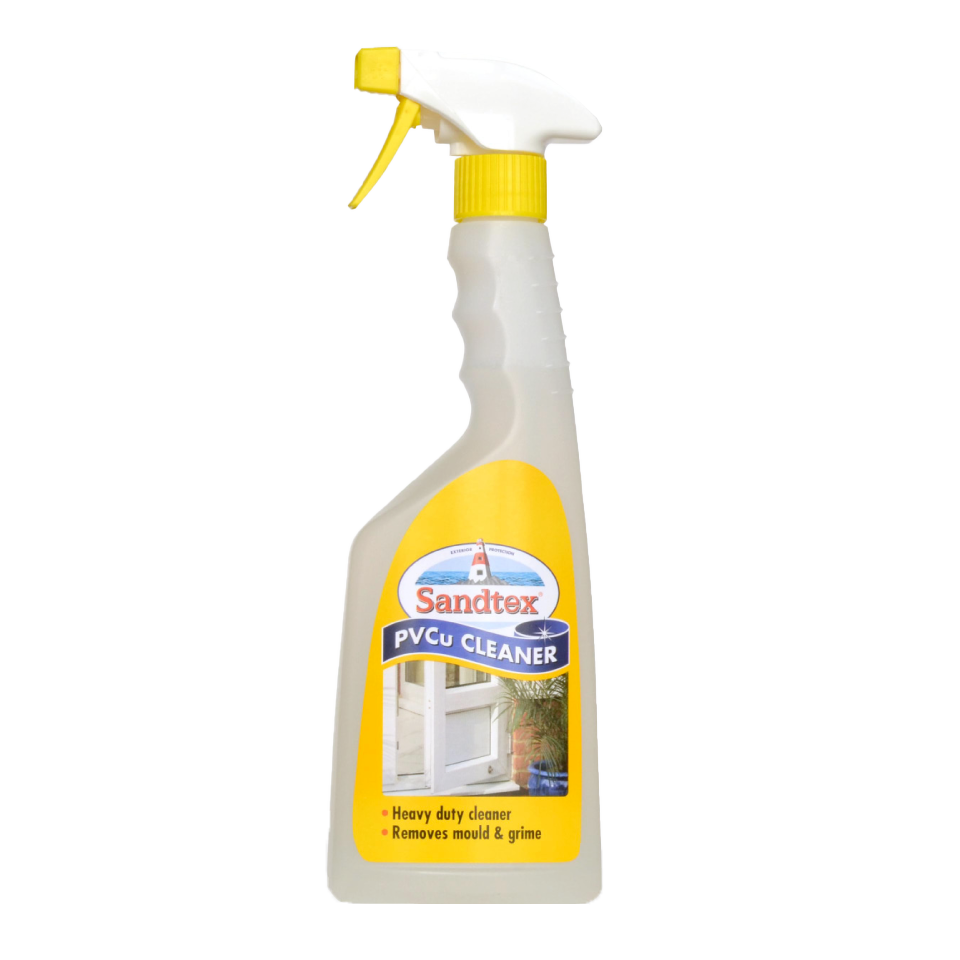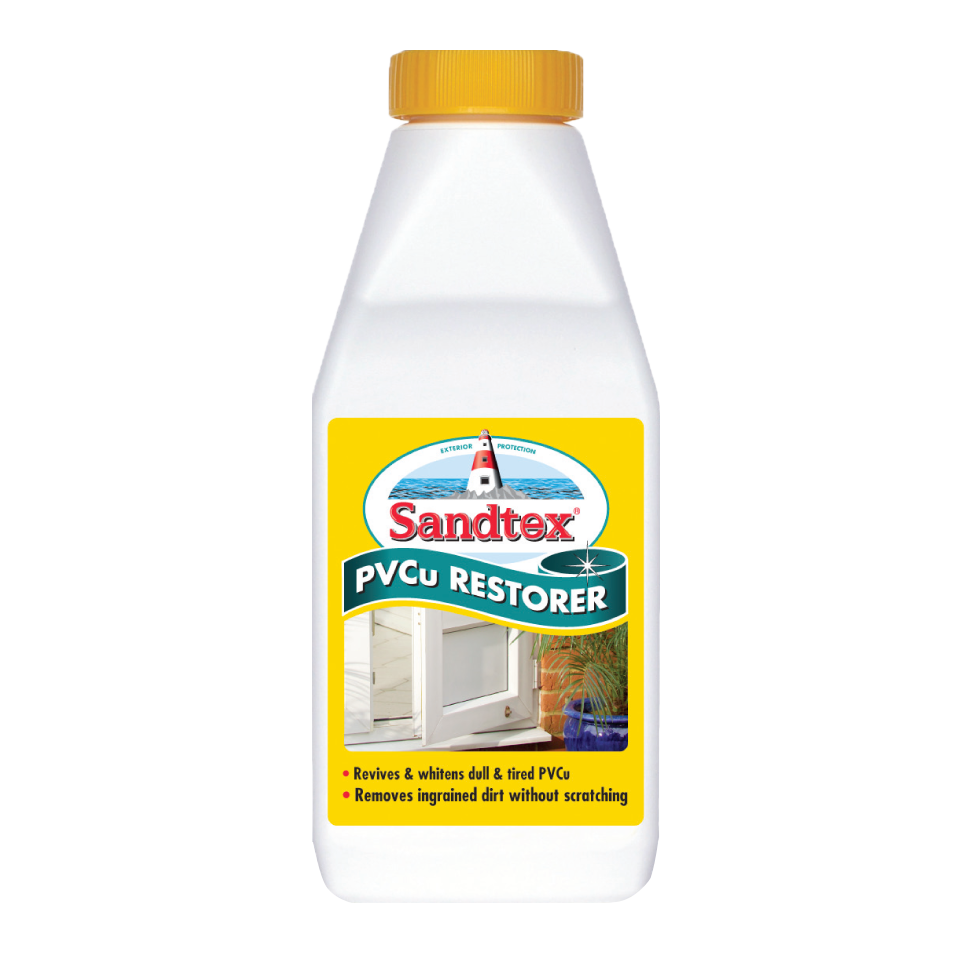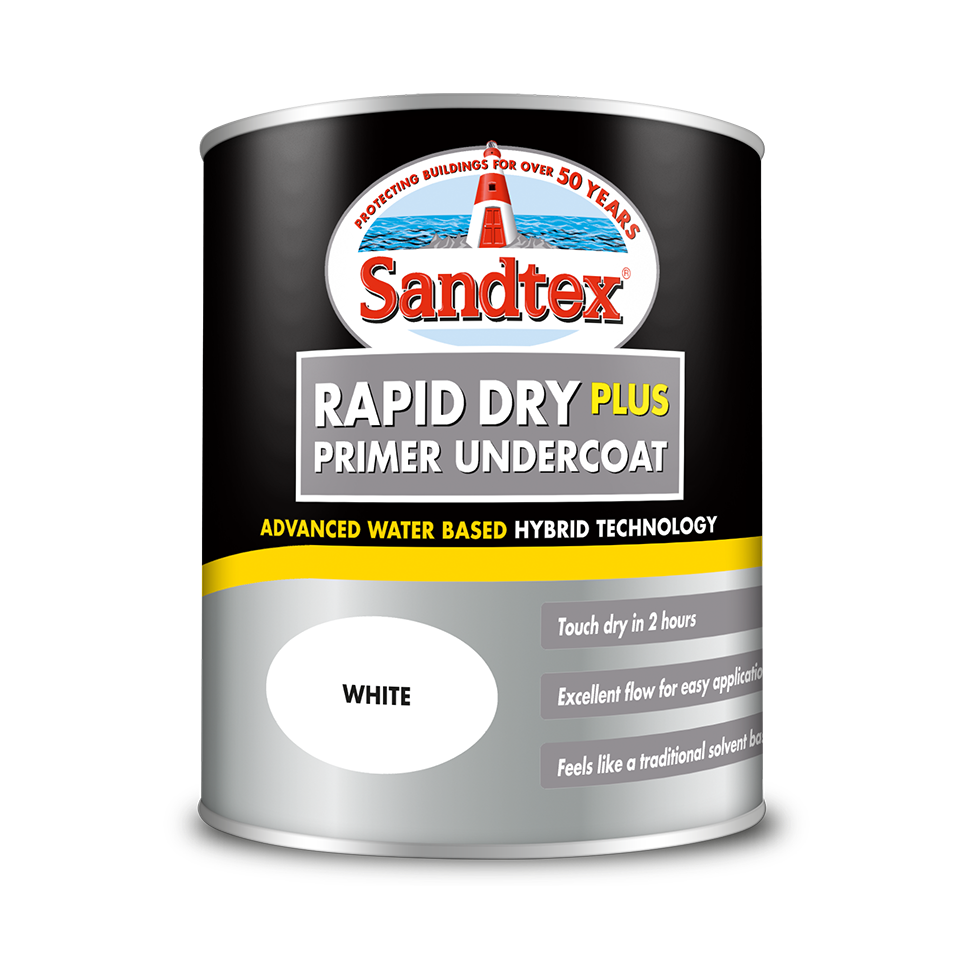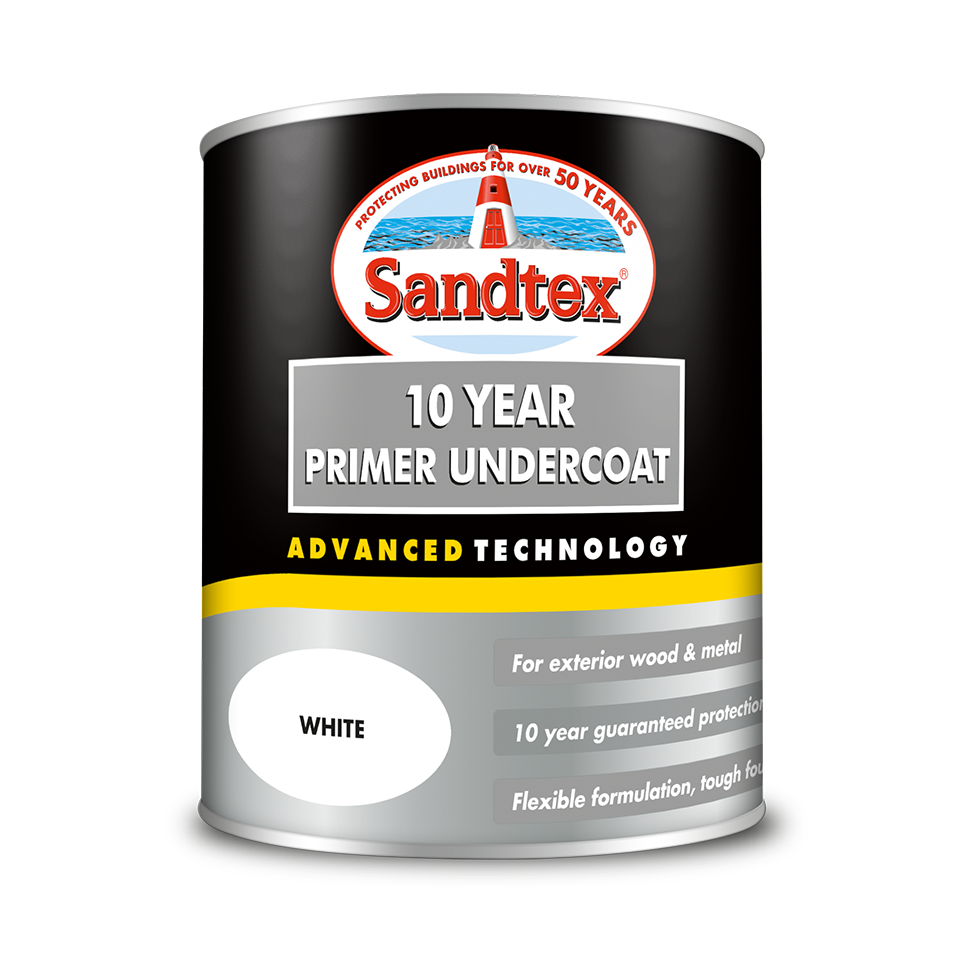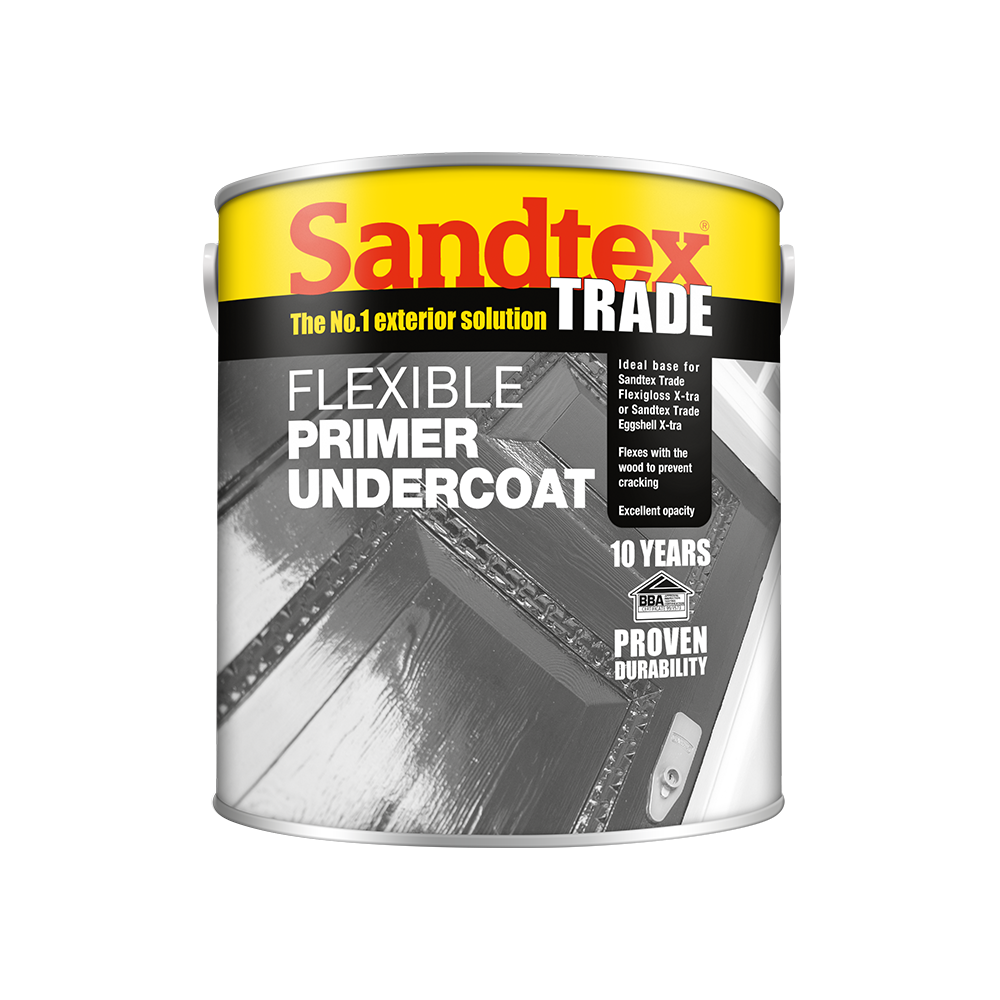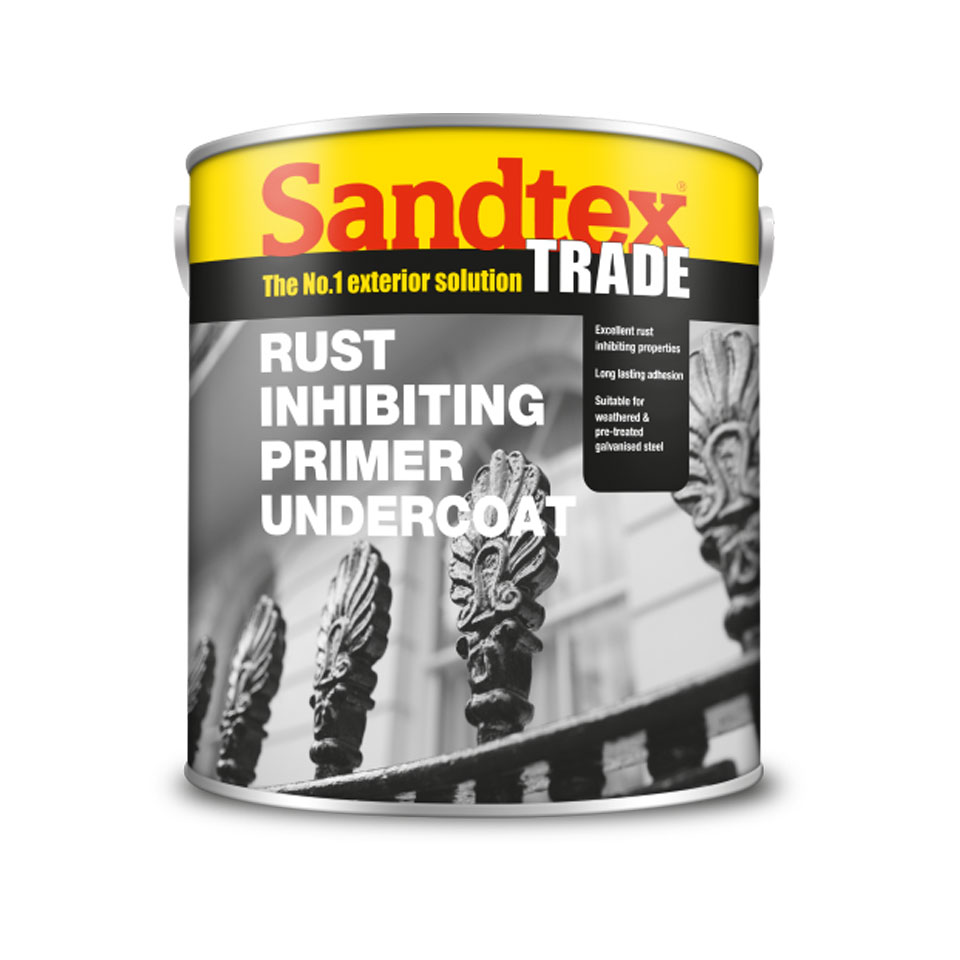For longer lasting good looks, preparation is key to achieving the perfect finish, while regular maintenance will keep your exteriors pristine. Sandtex offers a full system solution to make sure your home stays beautiful.
Quick Dry Stabilising Solution
- Apply 1 coat, by brush
- Touch dry in 4 hours
- Covers 6 - 10 sq metres per litre, depending on surface texture
PVCu Cleaner
- Spray onto surface from approximately 20 – 25 cm.
- Leave for 30 seconds before rinsing and wiping clean with a cloth.
PVCu Restorer
- apply Sandtex PVC-u Restorer to any dirty PVC-u window frames, door casings and doors.
- Revives and whitens PVC-u without scratching.
- Remove residual dirt before application.
Frequently asked questions
How do I get ready for my project?
Make sure that your work space is protected from any potential paint spillages or marks, along with ensuring all of the equipment you will require is on-hand. Items that you are likely to require include: paint rollers, brushes, roller covers, as well as paint stirrer sticks and a paint tray.
Can I just paint over old paint?
Typically, you can paint over old paint without priming and prepping the surface as long as the surface is sound and free from organic growth. However, there are some paints, such as oil based paints, which can't be painted over normal water based masonry. If you suspect and oil based paint is on your wall please contact us for advice.
How do I prepare a wall for painting?
Remove any dust, flaking paint or dirt with a stiff bristle brush or pressure washer. Treat any organic growth with fungicidal solution and any powdery areas with stabilising solution. If your exterior walls have any cracks repair them with ready mixed filler, sanding back to a smooth surface before painting.
Do you need to wash walls before painting?
Wash your walls with warm water and a sponge if necessary, before applying paint or primer. Remember to ensure the walls have fully dried out though.
Do I need to sand before painting the exterior?
It could be necessary to sand the exterior before painting if filler has been used for holes, gaps or cracks. Use a sanding block and wash off any dust before painting.
How do I remove flaking old paint?
Complete all stripping and rubbing down before you start painting so that dust and flakes will not fall on wet surfaces. Start from the top and work down, clean out gutters and paint if necessary. When removing old flaking masonry paint, use a scraper where possible then for small flakes a stiff bristle brush will remove residual flakes. It is important NOT to use a wire brush on the masonry surfaces as metal particles can become embedded on the surface, these react to the water based masonry paint thus resulting in potential rust spots that will make the walls look unsightly. When removing old paint it is recommended that you wear safety goggles / glasses, gloves and a mask, this will reduce the risk of damaging your eyes or breathing in dust particles.
Can I paint brickwork?
With the exception of Fletton bricks, which is uncommon in Ireland, most brickwork can be painted. Prepare the surface as you would with any other masonry, ensuring it is clean and sound. Treat any sign of organic growth with fungicide or a weak bleach solution. Prepare chalky or powdery surfaces with stabilising solution.
Can I paint my PVC door?
You can. Make sure it’s thoroughly cleaned with PVC cleaner, before giving a light sanding. Clean again and when dry apply Sandtex PVC-u primer. Now you’re ready for the refresh. Choose your top coat finish and colour, along with the recommended undercoat for it. Apply one coat undercoat and then two of your top coat. We’d recommend Sandtex Rapid Dry to get the job done quicker.
Why is the paint on my wall bubbling or lifting away?
This results from loss of adhesion, and lifting of the paint film from the underlying surface. There are a number of causes, such as organic growth (algae or mould) beneath the paint surface, but primarily underlying moisture is the cause. Other causes can be painting a warm surface in direct sunlight or an under bound / powdery substrate beneath. To fix the problem, first scrape off the blisters. If you can see the substrate, the problem is due to moisture. To resolve the issue off blisters originating at the substrate, try to remove the source of moisture. If you note any powdery residue on the wall or the reverse of removed paint then ensure any underlying chalky / powdery surfaces are treated with stabilising solution. If you scrape the blisters and find an older paint you will need to identify the issue, for example algae (you'll see speckles of the growth on the back of the scraped off blister), and treat accordingly.
I Have fine cracks in my paint surface. What causes that?
Cracking is the splitting of a dry paint film through at least one coat, which will lead to complete failure of the paint over time. Causes can be over thinning of the paint (or spreading it too thin) and painting under excessively cool or windy conditions that make water-based paint dry too fast. It may be possible to correct cracking that does not go down to the substrate by removing the loose or flaking paint with a scraper or stiff bristle brush (not wire), sanding to feather the edges, priming any bare spots and repainting. If the cracking goes down to the substrate remove all of the paint by scraping, sanding and/or use of a heat gun. Then prime and repaint with a quality exterior water-based paint.
Your nearest Sandtex stockist
Type in your town or postcode to discover
where you can purchase our paints.

